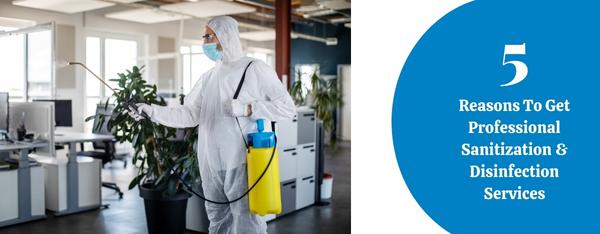
Contrary to popular belief, the chances of infection are increasing rather than decreasing in ordinary life. After all, who can tell the difference between cleanliness and hygiene? This problem is exacerbated by the increasing number of people who are sensitive to infections. Therefore, public assistance is required to combat infectious diseases economically viable and consistently. In turn, the public has a right to be properly and responsibly informed. Therefore, the distinction between "dirt" and "contamination" must be emphasized once more.
Germs are a normal component of life. Some are beneficial, while others are detrimental and cause disease. They are everywhere: in our air, soil, and water. They are all over our bodies and on our skin. Germs can also be found on the surfaces and things we touch.
These germs can sometimes transmit to you and make you sick. A television remote, for example, could harbor pathogens. So if you contact the remote and then rub your eyes and nose or eat with your hands, you may become infected with the germs.
Thus, it is critical to wash your hands frequently to avoid being infected by germs from surfaces and items. You can't, however, wash your hands every time you touch something. As a result, it is critical to clean and disinfect surfaces and objects on a regular basis.
What exactly is the difference between disinfectants and sanitizers?
Some individuals confuse disinfection with sanitizing. But they are not the same:
DISINFECTANTS
Disinfectants are chemicals that are used to kill microorganisms on surfaces and objects. Bleach and alcohol solutions are two common disinfectants. To kill germs, you usually need to keep the disinfectant on the surfaces and items for a set amount of time. Disinfecting does not always result in clean surfaces or the removal of germs.
SANITIZERS
Cleaning, disinfecting, or both methods of sanitation could be used. Sanitizing implies reducing the amount of germs to a safe level. Public health regulations or criteria in a workplace, school, or other location determine what constitutes a safe amount. Sanitation measures, for example, exist for restaurants and other food-preparation facilities. Depending on your demands, what you do to sterilize will differ. For instance, you could be cleaning a floor using a mop, a chemical, and water. To disinfect the plates, you may use a dishwasher. You may also be wiping down a television remote with an antibacterial wipe.
When Should You Clean and When Should You Disinfect?
Cleaning with soap or detergent minimizes germs on surfaces by removing pollutants and the danger of infection from surfaces.
Cleaning once a day is mostly adequate to eradicate viruses that may be on surfaces if no one with proven or suspected COVID-19 has been in the space. This also contributes to the facility's overall health.
Disinfecting with disinfectants destroys any leftover germs on surfaces, reducing the spreading danger of infection.
If the space: You may wish to clean more frequently or disinfect in addition to cleaning in shared places if the space:
- Is a high-traffic area with a significant population.
- Is not well ventilated.
- There is no access to handwashing or hand sanitizer.
- Is occupied by people who are at a higher risk of serious disease from COVID-19.
How can I clean and disinfect in a safe manner?
When using cleaning and disinfecting goods, it is critical to use caution:
- Please keep them in the original containers. Always follow the directions and read the warnings on the label.
- Unless the labels state otherwise, do not mix cleansers and disinfectants. Certain product combinations (such as chlorine bleach and ammonia cleansers) might result in significant harm or even death.
- Check the label to check if you need to wear gloves and/or wear eye protection when using the products.
- If you ingest, inhale, or get them on your skin, follow the label directions or get medical attention.
- Keep them out of children's reach.
How do disinfection and sanitization services work?
This method, like our rental uniform services, follows a route structure. Each location will have a vehicle devoted to disinfection and sanitizing sevice that will make periodic visits to your facility. With a contract-based payment plan, we offer variable service schedules to work around your business's schedule.
We'll be there if you need us to clean once a week or once a month thoroughly! When scheduling our services, we request that your area be cleaned before we arrive. The greater the surface area cleared of dirt and debris, the greater the surface area influenced by our services.
Different disinfection and sanitization services include:
- On our route, we have daily, weekly, and monthly planned services at specific times.
- A designated certified professional who is familiar with your facility
- By proactively sanitizing surfaces, the amount of bacteria and germs hiding on them is reduced.
- Customers and employees can have confidence that surfaces are being cleansed and disinfected on a regular basis.




